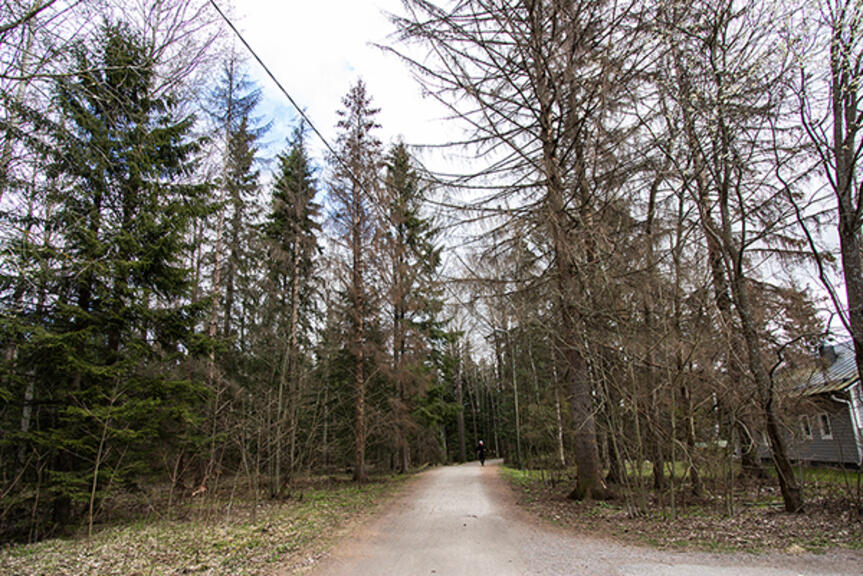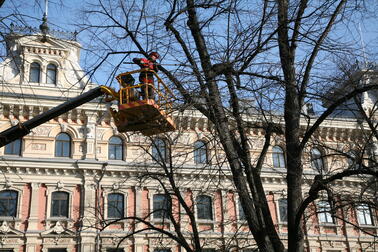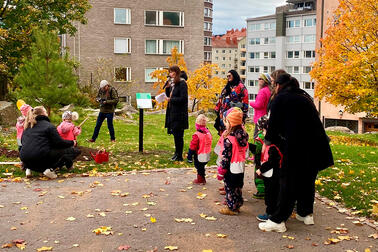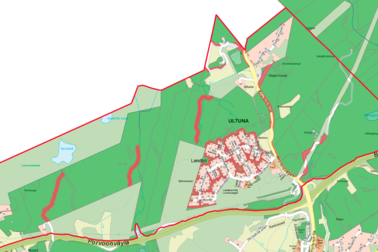
The City of Helsinki surveys the damage caused by the European spruce bark beetle in the spruce trees of the Helsinki Central Park.
The first drone flights of the survey were flown in May 2020, starting from the northern side of the Paloheinä sports cottage and proceeding along the recreational route between the climbing park and the Paloheinä artificial hill.
The European spruce bark beetle has caused many large spruce trees to dry in the Helsinki Central Park in the last few years. The biggest damage has occurred in the Paloheinä and Maunula areas. More than 200 large spruce trees have died at two sites in the Paloheinä area, and more than 100 spruce trees have died near the centre of Maunula on both sides of Männikkötie and on Keskuspuistontaipale.
The European spruce bark beetle occurs naturally in Finnish forests, but when the beetle population multiplies, the outbreak can cause spruces to die in large numbers. Especially large weakened spruce trees are favourable hosts for the European spruce bark beetle to reproduce. The beetles reproduce under thick bark, where larvae hatch feeding on the tree sap, thus interfering with the circulation of nutrients and water. Climate change is likely to worsen the damage caused by the European spruce bark beetle.
The City of Helsinki cooperates with Natural Resources Institute Finland (Luke), the University of Helsinki and Finnish Geospatial Research Institute of the National Land Survey of Finland, as the old spruce groves of Helsinki are now in danger. A large part of Helsinki’s natural values is related to spruce forests, and if the European spruce bark beetle population can grow significantly, there is danger that we lose the natural and landscape values of old spruce groves.
Research cooperation with several partners
The City of Helsinki has commissioned from Natural Resources Institute Finland a survey of dried trees in four research areas. The work involves documenting the GPS coordinates of each tree and a definition of the times and reasons of the death of trees.
Another survey commissioned by the City of Helsinki is used to investigate the health of trees and the spread of forest damage in four research areas located in the Helsinki Central Park, each about 20 hectares in size. This survey is carried out by a researcher from Oula Consulting, who also works at the Department of Forest Sciences of the University of Helsinki. The survey is conducted with the help of RGB and multispectral cameras on drones.
The work involves the field work, the necessary equipment, the gathering of two sets of images, and the analysis and processing of the images into maps illustrating the health of trees to be used for a visualization of the progress of tree damage.
The survey includes an assessment of the ability and accuracy of drone imaging to detect weakened trees. The technology is utilized to monitor and to chart damage in City of Helsinki recreational forests.
Photo: Mikko Vuohelainen / Stara


